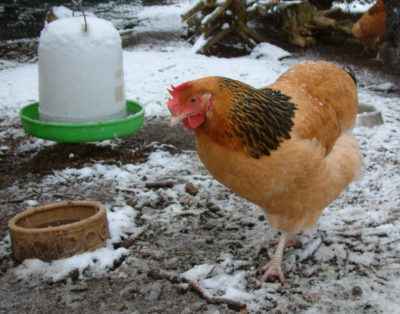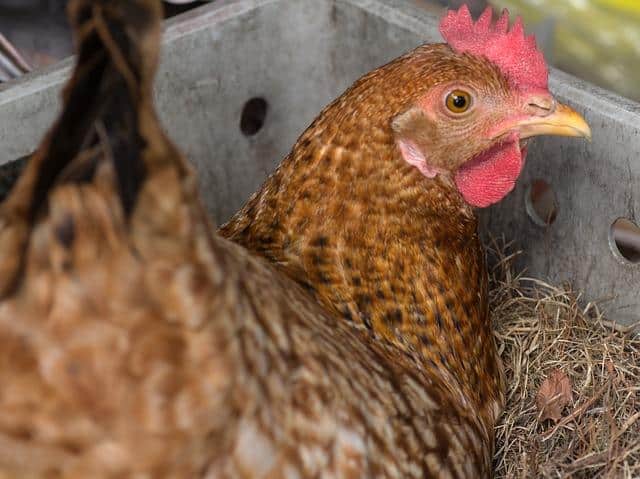We have been raising chickens for their eggs on our homestead almost from the first day we got here six years ago. Chickens are a great starter as far as livestock goes and let’s face it, who doesn’t love farm fresh eggs? Chickens are relatively simple to keep, hardy and during certain times of the year produce a lot of eggs. But what about those other times during the year?
It is a common misconception that egg production by necessity is slowed down or even halted in the winter months. Most folks think that this is due to temperatures and scarcity of forage, among other things. While these do contribute to the standard winter slowdown in egg laying, they are not the primary cause. The big culprit here is the shortage of daylight. From a biological standpoint this makes a great deal of sense.
All The Answers To Every Chicken Question And Quandary …
In most parts of the world, the number of daylight hours is the most reliable indicator of the season. Like many creatures, chickens will limit their reproduction in the winter simply because it is harder to nest and incubate new chicks in the cold than in the warmer months. In a chicken’s opinion, eggs are offspring; they are far less concerned about your morning omelet than they are with perpetuating their species.
Fortunately, chickens are not deep-thinkers. None of this is controlled by conscious effort, rather by the pituitary gland. It is therefore fairly easy to trick birds into prolonged laying by the simple addition of artificial lighting into the coop to achieve the peak laying conditions of 16 hours of daily sunlight. We have achieved this goal at our homestead by adding a pair of solar-powered shed light kits to the coop. At the times of year when light becomes an issue, we turn them on just before sunset and off right before bed. These light kits have allowed us to avoid running extension cords through the yard, and allow us to provide this light boost without grid dependence. In the past we had run the cords and used a  pair of heat lamps on timers. This, despite the extension cords and grid dependence, had a couple of advantages. First, they provided some heat in the coop, keeping the birds a bit more comfortable. Secondly, they didn’t require two trips out to the coop in the dark of winter, keeping us more comfortable. Finally, the extra light could be used in the early hours without us having to get up, giving the chickens the opportunity to jump start their day.
pair of heat lamps on timers. This, despite the extension cords and grid dependence, had a couple of advantages. First, they provided some heat in the coop, keeping the birds a bit more comfortable. Secondly, they didn’t require two trips out to the coop in the dark of winter, keeping us more comfortable. Finally, the extra light could be used in the early hours without us having to get up, giving the chickens the opportunity to jump start their day.
Once lighting has been addressed, you have to confront the nutrition issues of winter. During the cold months, more energy is required by animals just for maintaining body temperature. So more calories are going to be required. Your birds will require more feed at a time when forage is reduced. I feed my birds a 50/50 mix of a good 16 percent layer pellet and scratch, supplemented (as always) with a healthy dose of kitchen scraps.
Diatomaceous Earth: The Best All-Natural Wormer For Your Livestock
From time to time I will add a flock raiser in the 20 percent range to give my birds an extra boost. In an effort to reduce the number of trips out into the cold, I have set up a pair of game feeder in the chicken yard. I keep them filled with the feed mix and set up for four feedings a day. The four feedings keep the chickens from straying too far from their yard in search of food and provide the calories they need. The feeders are run by small solar panels and batteries, again making this an off-grid hack.
The final issue is water. Water can be hard to come by in winter, at least in a non-solid form. By stimulating your chickens to produce eggs, you have increased their need for water significantly. In order to meet this need, we use heated waterers. These can be found at most feed or farm supply stores. The one issue I have with these is that they require an extension cord from the house, but they are needed and do get the job done.
Ultimately, the plan is to set the coop up with its own dedicated, alternative energy system. I have a small wind generator for this purpose, and intend to add a solar panel at some point. Then, I’m just a charge controller and deep cycle battery away from running all my wintertime egg production off the grid.
With a bit of effort, you can keep your chickens laying eggs year round. As with all things, there is a balance to be struck. There is some expense and a bit of work involved in making it happen, but with a little ingenuity this can be minimized. For us, the desire for fresh eggs year-round make the efforts well worth it.
What advice would you add to get chickens to lay more eggs during winter? Share your tips in the section below:
Harness The Power Of Nature’s Most Remarkable Healer: Vinegar
 Off The Grid News Better Ideas For Off The Grid Living
Off The Grid News Better Ideas For Off The Grid Living




